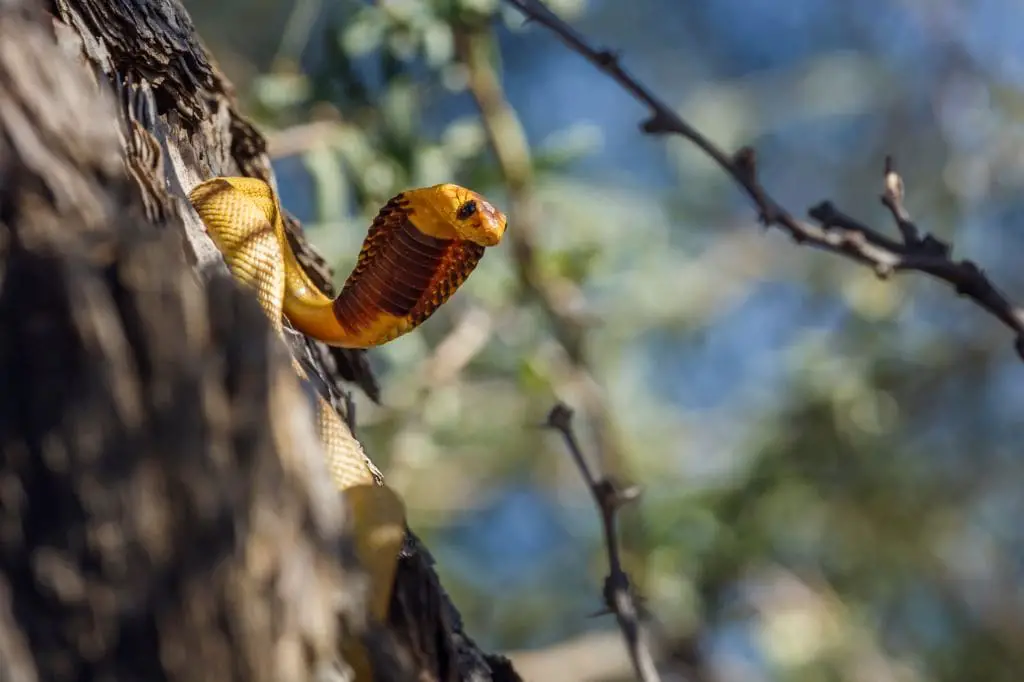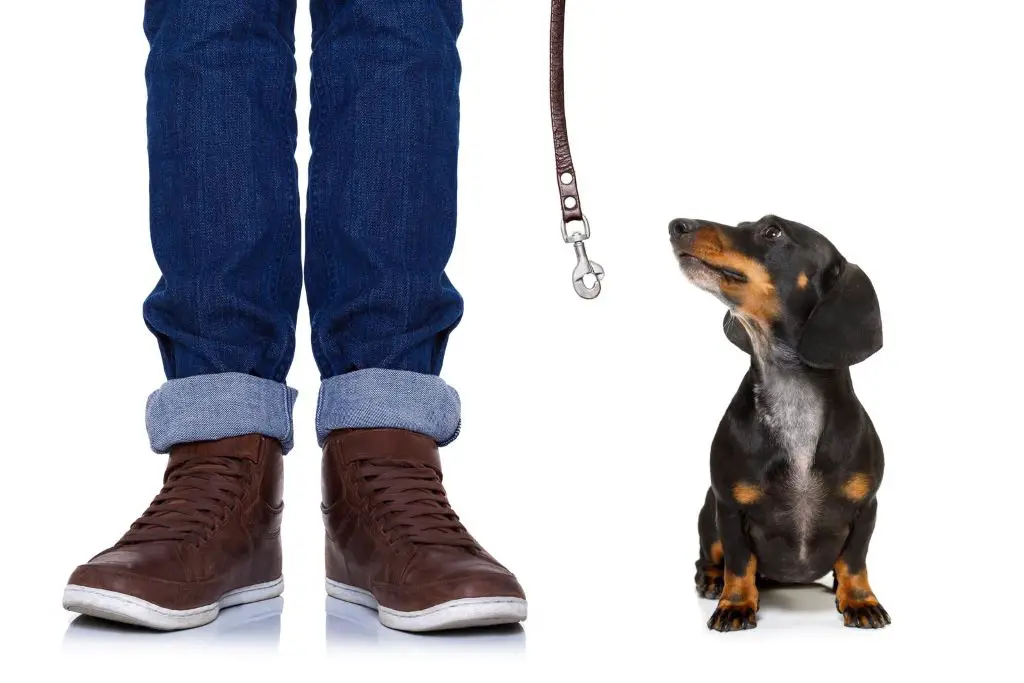If you’re a dachshund owner, you may have wondered if your furry friend has what it takes to kill a snake. While dachshunds were originally bred to hunt badgers and other small animals, their predatory instincts can extend to snakes as well. However, whether or not a dachshund can kill a snake depends on a variety of factors, including the size and species of the snake, as well as the dachshund’s temperament and training.
It’s important to understand that not all dogs have an innate hatred of snakes. In fact, most dogs are indifferent to them. However, some breeds, such as terriers, may be more likely to show aggression towards snakes since they were bred to hunt and kill rodents. Dachshunds fall into this category, as they were originally bred for hunting small game. While dachshunds may not actively seek out snakes, they may attack them if they feel threatened or if they mistake them for prey.
While a dachshund’s ability to kill a snake may vary, it’s important to take precautions to keep your pet safe. This includes keeping your yard and home free of snakes, training your dachshund to avoid potentially dangerous encounters, and seeking medical attention immediately if your dachshund is bitten by a snake. By understanding the risks and taking appropriate measures, you can help keep your dachshund safe from snakes.
Key Takeaways
- Dachshunds were originally bred to hunt small game, which can include snakes.
- Not all dogs have an innate hatred of snakes, but some breeds, such as terriers, may be more likely to show aggression towards them.
- It’s important to take precautions to keep your dachshund safe from snakes, including keeping your yard and home free of snakes, training your dachshund to avoid potentially dangerous encounters, and seeking medical attention immediately if your dachshund is bitten by a snake.
Understanding Dachshunds
Dachshunds are a breed of dog that originated in Germany. They are known for their long bodies, short legs, and distinctive appearance. Dachshunds come in three varieties: smooth-haired, wire-haired, and long-haired. Each variety has its own unique characteristics, but all dachshunds share certain physical attributes and hunting instincts.
Physical Attributes
Dachshunds are small dogs that typically weigh between 11 and 32 pounds. They have a long body and short legs, which gives them a distinctive appearance. Dachshunds have a powerful chest and strong legs that allow them to move quickly and efficiently. They also have a keen sense of smell and excellent hearing, which makes them well-suited for hunting.
Hunting Instincts
Dachshunds were originally bred to hunt badgers and other small animals. They have a strong hunting instinct that can extend to other prey, including snakes. Dachshunds are known for their tenacity and courage when it comes to hunting. They have a strong sense of smell and are able to track prey over long distances. Once they locate their target, they will not give up until they have caught it.
It is important to note that not all dachshunds have the same level of hunting instinct. Some may be more interested in hunting than others, and some may not have any interest in hunting at all. Additionally, it is important to train dachshunds to hunt safely and responsibly. They should be taught to avoid dangerous animals and to only hunt in areas where it is legal and safe to do so.
In conclusion, dachshunds are small dogs with a powerful hunting instinct. They have a distinctive appearance and are well-suited for hunting small animals, including snakes. However, not all dachshunds have the same level of hunting instinct, and it is important to train them to hunt safely and responsibly.
Snake Behavior and Defense Mechanisms

Snakes are fascinating creatures that come in a variety of shapes, sizes, and colors. They have evolved a range of defensive behaviors to protect themselves from potential threats. Understanding snake behavior and defense mechanisms can help you stay safe when you encounter them in the wild.
Camouflage and Mimicry
Snakes are masters of camouflage and mimicry. They can easily blend into their surroundings and often manage to go unnoticed. Some snakes have evolved to look like other animals, such as sticks, leaves, or even venomous species. This helps them to avoid predators and potential threats.
Hissing and Striking
When threatened, many snakes will hiss and strike. This is a warning sign that they are feeling threatened and will defend themselves if necessary. Hissing is a way for snakes to make themselves appear larger and more intimidating, while striking is a way to ward off potential predators.
Venom and Constriction
Some snakes have evolved venom as a defense mechanism. Venomous snakes use their venom to immobilize or kill their prey, but they can also use it to defend themselves from potential threats. Other snakes, such as pythons and boas, have evolved constriction as a defense mechanism. They wrap their bodies around their prey or potential threat and squeeze until the prey or threat is immobilized.
Playing Dead
Some snakes will play dead when threatened. This is a last-resort defense mechanism that is used when all other options have failed. Playing dead can fool potential predators into thinking that the snake is no longer a threat, allowing the snake to escape.
Understanding snake behavior and defense mechanisms can help you stay safe when you encounter snakes in the wild. Remember to always give snakes plenty of space and avoid provoking them. If you do encounter a snake, observe it from a safe distance and appreciate its beauty from afar.
Dachshunds and Snakes: A Dangerous Encounter
Encounters between dachshunds and snakes can be dangerous, especially if the snake is venomous. While dachshunds are known for their bravery and tenacity, they are not immune to the dangers of snake bites.
If you live in an area where snakes are common, it is important to be aware of the risks and take steps to protect your dachshund. Here are a few things to keep in mind:
-
Dachshunds have a strong prey drive and may be attracted to snakes, especially if they are moving quickly or making noise. Keep your dachshund on a leash when walking in areas where snakes are present, and avoid letting them off-leash in areas where you cannot see what is around you.
-
If your dachshund encounters a snake, do not try to intervene. Instead, call your dog away and move to a safe distance. If the snake is venomous, seek medical attention for your dog immediately.
-
Some dachshunds have a natural instinct to hunt and kill snakes. While this can be helpful in keeping your property free of snakes, it is important to remember that not all snakes are harmless. If you are unsure whether a snake is venomous or not, it is best to leave it alone.
-
If you live in an area where snakes are common, consider taking a snake avoidance training class with your dachshund. These classes can help your dog learn to recognize and avoid snakes, reducing the risk of a dangerous encounter.
Remember, prevention is key when it comes to keeping your dachshund safe from snakes. Keep your dog on a leash, be aware of your surroundings, and seek medical attention immediately if your dog is bitten by a snake.
Safety Measures for Dachshunds
Dachshunds are curious and adventurous dogs, which can put them at risk of encountering dangerous animals like snakes. While dachshunds are bred to hunt small game, it’s important to take precautions to keep them safe from venomous snakes. Here are some safety measures you can take to protect your dachshund:
1. Keep Your Yard Free of Debris
Snakes can hide in piles of leaves, wood, and other debris, so it’s important to keep your yard clean and clear. Make sure to remove any clutter that could provide a hiding place for snakes, and keep your grass trimmed short.
2. Supervise Your Dachshund
When you’re outside with your dachshund, make sure to keep a close eye on them. Don’t let them wander too far away from you, and keep them on a leash if necessary. If you see a snake, immediately call your dachshund back to you and move away from the area.
3. Train Your Dachshund to Avoid Snakes
Consider training your dachshund to recognize and avoid snakes. You can use scent training to teach them to recognize the scent of a snake and avoid it. Additionally, you can use positive reinforcement to reward your dachshund for avoiding snakes and other dangerous animals.
4. Vaccinate Your Dachshund
Talk to your veterinarian about vaccinating your dachshund against snake bites. While the vaccine won’t prevent a bite, it can help reduce the severity of the reaction and give you more time to seek veterinary care.
5. Know What to Do in Case of a Snake Bite
If your dachshund is bitten by a snake, it’s important to seek veterinary care immediately. Keep your dachshund calm and still to slow the spread of venom, and transport them to the vet as quickly as possible. Do not attempt to suck out the venom or apply a tourniquet, as these can do more harm than good.
By following these safety measures, you can help keep your dachshund safe from snakes and other potential hazards. Remember to always supervise your dachshund when outside and seek veterinary care immediately if they are bitten by a snake.
Training Your Dachshund for Snake Encounters
If you live in an area with a high snake population, it’s important to train your dachshund to avoid and stay safe from these potentially dangerous reptiles. Here are some tips to help you train your dachshund for snake encounters:
1. Start with Basic Obedience Training
Before you can train your dachshund to avoid snakes, you need to ensure that they have basic obedience training. This includes commands such as “sit,” “stay,” and “come.” Having a strong foundation in obedience training will make it easier to train your dachshund to avoid snakes.

2. Use Positive Reinforcement
When training your dachshund to avoid snakes, it’s important to use positive reinforcement. Reward your pup with treats and praise when they successfully avoid a snake. This will help reinforce good behavior and encourage your dachshund to continue avoiding snakes in the future.
3. Use a Snake Scented Toy
You can use a snake-scented toy to help train your dachshund to avoid snakes. Start by placing the toy in a safe area where your dachshund can see it. When your dachshund approaches the toy, use a command such as “leave it” and reward them with a treat when they move away from the toy.
4. Teach Your Dachshund to Recognize Snake Sounds
Snakes make a distinct hissing sound that can be alarming to your dachshund. You can train your dachshund to recognize this sound by playing a recording of a snake hissing and rewarding them when they react appropriately.
5. Consider Snake Avoidance Training
If you live in an area with a high snake population, you may want to consider snake avoidance training for your dachshund. This type of training uses a mild shock collar to teach your dachshund to avoid snakes. However, it’s important to note that this type of training is controversial and should only be done with the guidance of a professional trainer.
By following these tips, you can train your dachshund to avoid and stay safe from snakes. Remember to always supervise your dachshund when they are outside and to seek veterinary care immediately if you suspect that your dachshund has been bitten by a snake.
Medical Attention and Snake Bites
If your Dachshund gets bitten by a snake, it is essential to seek medical attention immediately. Even if the snake is not poisonous, the bite can still cause an infection or an allergic reaction in your dog. Therefore, it is crucial to treat all snake bites as if they were venomous.
Here are some steps you can take if your Dachshund is bitten by a snake:
-
Stay Calm: If you are calm, your dog will be calm too. If your dog sees that you are panicking, it can cause them to become more anxious and stressed.
-
Identify the Snake: If possible, try to identify the snake that bit your dog. Take note of the snake’s size, color, and markings. This information can help the veterinarian determine the best course of treatment.
-
Keep Your Dog Calm: Restrict your dog’s movement as much as possible. This can help slow down the spread of venom throughout their body.
-
Seek Medical Attention: Take your Dachshund to the nearest veterinary office immediately. Do not wait for the symptoms to appear. The veterinarian will examine your dog and provide the necessary treatment.
-
Observe Your Dog: After your dog receives treatment, observe them closely for any changes in behavior or symptoms. If you notice anything unusual, contact your veterinarian immediately.
In conclusion, snake bites can be dangerous for your Dachshund. It is essential to seek medical attention immediately if you suspect that your dog has been bitten by a snake. Remember to stay calm, restrict your dog’s movement, and take them to the nearest veterinary office as soon as possible.
Frequently Asked Questions
What dogs are good at keeping snakes away?
There are several dog breeds that are known to be good at keeping snakes away. These breeds include Jack Russell Terriers, Rat Terriers, and Miniature Schnauzers. These dogs have a natural instinct to hunt and chase small prey, including snakes. However, it’s important to note that not all dogs are good at keeping snakes away, and some may even be attracted to them.
Can dogs protect their owners from snakes?
Yes, dogs can protect their owners from snakes. Dogs have a natural instinct to protect their owners from danger, and this includes snakes. Some dogs may even go as far as to attack a snake to protect their owner. However, it’s important to remember that not all dogs are trained to protect their owners, and some may not have the natural instinct to do so.
Which dog breeds are best for snake control?
The best dog breeds for snake control are those that have a natural instinct to hunt and kill small prey, including snakes. These breeds include Jack Russell Terriers, Rat Terriers, Miniature Schnauzers, Dachshunds, and Beagles. However, it’s important to remember that not all dogs are good at snake control, and some may even be attracted to snakes.
Do dogs have a natural instinct to kill snakes?
Yes, many dogs have a natural instinct to kill snakes. This is because dogs are descended from wolves, which are natural predators. Dogs have a strong prey drive, which means they are attracted to small, fast-moving objects, including snakes. However, not all dogs have this instinct, and some may even be afraid of snakes.
What are some effective ways to keep snakes away from your home?
There are several effective ways to keep snakes away from your home. One way is to keep your yard clean and free of clutter, as snakes like to hide in piles of debris. Another way is to keep your grass cut short, as snakes prefer tall grass. You can also use snake repellents, such as mothballs or sulfur, to keep snakes away. However, it’s important to remember that these methods may not be effective for all types of snakes, and some snakes may be immune to certain repellents.
Conclusion
In general, dachshunds can kill snakes but it is not a guarantee. While dachshunds were originally bred to hunt small animals, such as rodents and rabbits, their predatory instincts can extend to snakes as well. However, not all dachshunds are natural hunters and some may not have the drive to kill snakes.
It is important to note that snakes can be dangerous to dogs, especially if they are venomous. Therefore, it is recommended to keep your dachshund on a leash when walking in areas where snakes are known to be present. Additionally, it is important to train your dachshund to avoid snakes and not engage with them.
If you live in an area where snakes are common, it may be beneficial to consider other breeds of dogs that are known for their snake-hunting abilities. Some examples include terriers, such as the Jack Russell Terrier and the Rat Terrier, as well as the German Pinscher and the West Highland White Terrier. These breeds have been purposely bred to hunt smaller animals like rats and mice, and may have a stronger drive to hunt and kill snakes.
Overall, while dachshunds can kill snakes, it is not a guarantee and it is important to take precautions to keep your dachshund safe.









